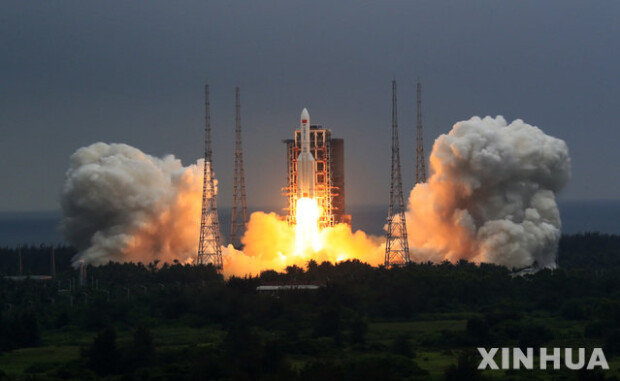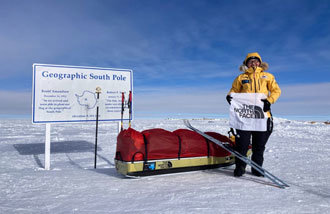Debris of China’s 22-ton space rocket could fall onto Earth
Debris of China’s 22-ton space rocket could fall onto Earth
Posted May. 08, 2021 07:16,
Updated May. 08, 2021 07:16

Debris of China’s space rocket Changzheng (Long March) 5B will likely reenter the earth’s atmosphere around this weekend. The South Korean and U.S. military authorities said the Korean Peninsula is not included in candidate sites for the rocket’s crash, but they agreed to strengthen cooperation to prepare for an emergency situation.
The space information and situation room of the South Korean Air Force held a joint video meeting with the Joint Aerospace Operation Center of the U.S. Space Operations Command on Friday, and agreed to share surveillance information on the trajectory of debris from the rocket, which is expected to reenter the earth’s atmosphere on Saturday or Sunday. Considering the size of the Changzheng 5B rocket, debris will likely fall onto the earth, rather than disappearing even after entering the atmosphere. The South Korean and U.S. military authorities predict the debris will fall into the Atlantic Ocean, but the possibility for the debris to deviate from its original trajectory when reentering the atmosphere cannot reportedly be ruled out.
China launched and put into orbit the Tianhe, a core module designed for constructing its own space station, on April 29, but the Changzheng 5B rocket, which transported the Tianhe, went out of control, and the debris weighing 22.5 tons is falling onto the earth 1 to 2 kilometers daily from an altitude of 280 kilometers.
The South Korean military authority plans to share information on the projected trajectory of debris by using the U.S. Space Operations Command’s surveillance assets. In addition, to be prepared for the worst situation wherein debris falls into the skies over the Korean Peninsula, the military is reportedly considering using an electrooptical satellite surveillance system, or a high-performance radar satellite tracking system, which are under development for use in combat mission.
Kyu-Jin Shin newjin@donga.com






